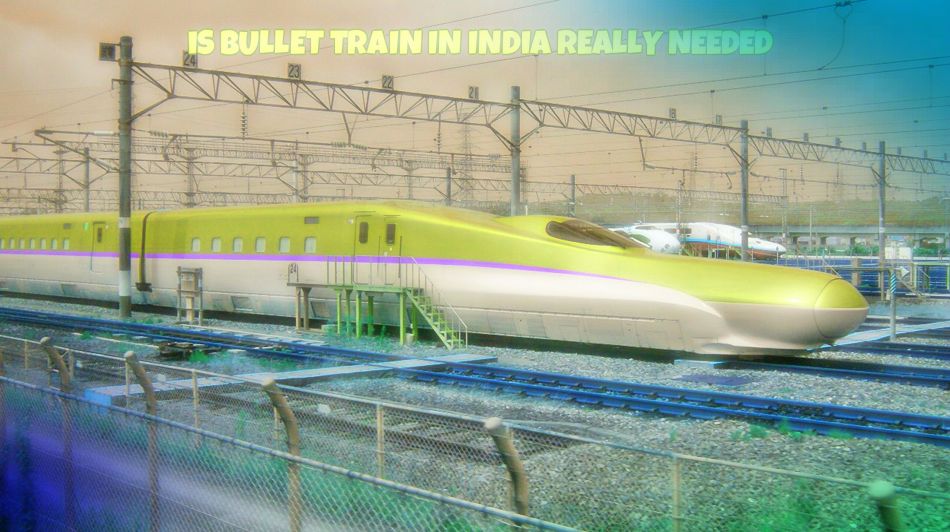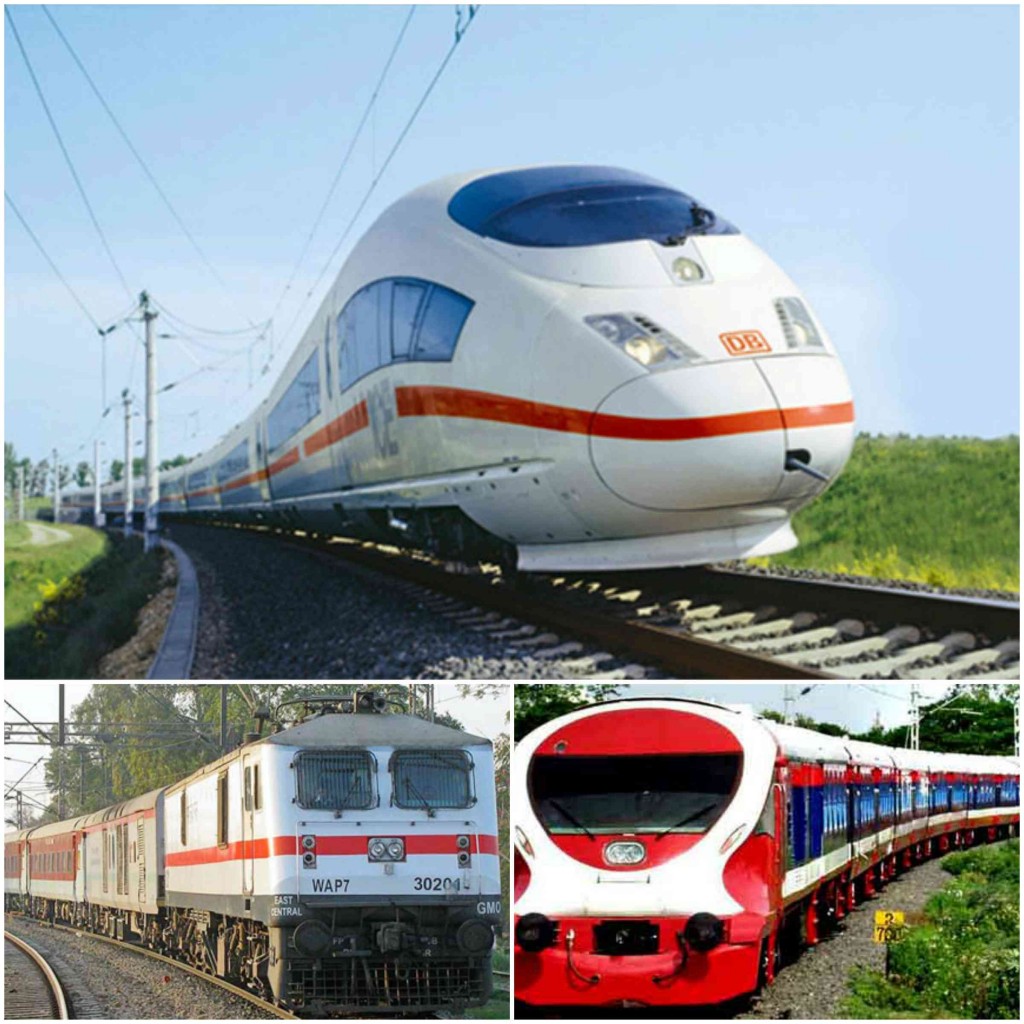Indians used to see bullet trains and often used to talk about it but never imagined that the dream of bullet trains will come true soon. The UPA government formed a committee in 2013 to bring high speed trains in India but didn’t deliver on any promises.
Whereas with the promise of Ache Din, Narendra modi led NDA government in its first budget sanctioned 200 crores for bullet train project to make sure that Indians should never lack behind in terms of speed and technology. Mr.PM even had a conversation with both Japan and China for this upcoming project.
Now the big question arises that is bullet train in India really needed. Check out some basic facts which can raise our eyebrows-
Here are some Pros –
Mumbai is the financial capital of India and Ahmedabad is one of the most emerging city from business point of view which creates a high chance of the success for this bullet train in India. The project is estimated to double its revenue in the next twenty years after its completion.
There will be creation of new jobs via this project.
Industries and Organizations which used to send their representatives from business class of flights can use a new source of transportation if they are quite fine with the time issue. Their work can be done in less travel fare via bullet trains.
The bullet trains are very eco- friendly and do not harm the nature.
All those who fear to travel in air can travel easily maintaining the same type of royalty.
There will be a new mode of transportation in India and somewhere its a matter of pride too for Indians.
Here are some Cons –
Starting with Indian railways which is the biggest traveling source of India and by which people mostly used to get their jobs done. The Indian railways are in loss and government used to increase the rail fare time to time to overcome the losses. But even after that the maintenance and conditions of these trains are quite poor.
The security is not upto the mark which leads to many mishaps like train derailments, accidents, burglaries and thefts in train. The tenders of the railways are facing corruptions and the material quality used in trains is quite poor. Most trains run late apart from Rajdhani, Shatabdi etc. The food quality is also a major issue. But the biggest thing is the reservation problem as waiting for the trains are too much.
So in short it can be said that the conditions of the Indian railway is pathetic although its running from 1854 and India is taking a new step of starting bullet train. This leads us to think that whether bullet train in India is really needed for the time being.
The estimated installation cost for 1 Km track is Rs. 115 Crores. The estimated track distance in between Mumbai and Ahmedabad is 500 Kms which is going to make the travel rate costlier for the common man point of view. Apart from that, the security as well as the installation cost is too high
The elite class population is very low as compared to that of the middle class. As we know that the middle class or a common man cannot think of bullet trains except emergencies because traveling in bullet trains can be a out of pocket issue.
Why will people prefer bullet trains if airways are doing the same job in less money and less time (as estimated).
India is unable to maintain its basic train service and the Indian railways are in loss so is there is no guarantee that future of bullet train is secure and this project will not be shut down.
Sources reveal that a country like China which is running bullet train for years is going to shut down its service due to constant losses.
But still after these pros and cons we cant say if bullet train will be successful in India or not since one doesn’t know about India’s economy and technological advancement. So let’s keep our fingers crossed and hope for the best results.
Viewers can also give their point to let us know that Is Bullet train in India really needed.









If u think from accident point of view, in India there were many accidents held by only normal trains and if bullet train will come then u can imagine how many accidents will occur.
Why we should keep our fingers crossed and hope for the best results let’s discuss and take good decisions for our future
For a country which runs nearly 10,000 trains every day to ferry more than 23 million passengers, equivalent to Australia’s entire population, a bullet train that will carry a few thousand people could hardly be called a sign of ‘development’.
Crumbling infrastructure
India’s mammoth 66,687 km long colonial-era rail network is old and creaky. Less than half of it is electrified. Trains that seldom run on time are now witnessing frequent derailments. As if the lack of safety standards weren’t enough, the hygiene level is abysmal too.
Railway stations across the country, especially in metros, are ill equipped to cater to the growing number of passengers. Passengers are often seen jumping inside unreserved coaches through the windows to grab a seat before all are taken.
Soft loan
While Prime Minister Narendra Modi heaped praise on his Japanese counterpart Shinzo Abe for extending a soft loan worth Rs Rs 88,000 crore at 0.1 per cent for India’s ambitious bullet train project, it’s Japan who should thank India for accepting the loan at a time when Japan’s economy has yet to fully overcome deflation.
Bank of Japan has been battling deflation for the last two decades. It adopted negative interest rates in 2016 to boost consumer prices which have been stagnant for years. Japan’s struggling economy will get a fillip as majority of Rs 80,000 crore loan money would go back to Japanese companies and in hiring skilled Japanese workers.
While Prime Minister Narendra Modi said ,”In Shinzo Abe, India has found a friend no bank in the world could match,” it is evident that there are no free lunches here. Japan has as much to gain by financing the bullet train project as India does by getting a modern rail network.
Fares
The cost of Ahmedabad-Mumbai High Speed Rail Project is estimated to be Rs 1,10,000 crore, almost equal to total capital outlay of Indian Railways in 2017. This expenditure for a route which is only 500 odd kilometres in length could become a burden for state exchequer in the years to come.
According to a study conducted by IIM Ahmedabad, Ahmedabad-Mumbai bullet train will need to make 100 trips daily and carry 88,000-118,000 passengers per day to be financially viable. This figure could well be way above the total number of passengers travelling between the two cities on any given day.
Not to mention the ticket price for the bullet train is expected to be around Rs 3,000. For the same price, one can travel between Ahmedabad and Mumbai on an airplane and reach in an hour.
Railway Minister Piyush Goyal had earlier said the fare of the high-speed bullet train would be ‘affordable for all’. If the ticket prices of the bullet train which caters to well-to-do passengers are not driven by market force, then this negates the viability of such a huge investment.
At a time when the government is looking to sell debt-ridden Air India, the bullet train could create another white elephant in the country.
1) For those who say government should
spend this money for poor…..government doesn’t have any money to spend Japan is giving loan.
2) Ask Japan to give loan for helping poor….they will give you ????
3) Out of 35 24 trains will be made in Japan & 11 will be made in India so we will get technology as well as infrastructure… Manufacturing sector will gain.
4) Those who asked “what if bullet train gets derailed ?” Well its running fantastically allover Japan from more than 50 years…nothing happened….Metro is running in India successfully without trouble.
5) Chances of Ahmedabad-Mumbai corridor being a success are high asnumber of rich & upper-middle class commuters are high…even Chennai-Bengluru corridor is also a good contendor.
I don’t think Bullet train project will be viable in India as it will cater very small community and cost of the project is too high. Better to increase trains between mumbai & Ahemdabad. Further fare will not be affordable to 90% passengers. Its for only 5% community belongs to VIP class. The farmers will loose their most valuable lands which is their Bread & Butter. No farmers and landowners will agree to give their lands less than 4 times of Market Value. This will be an anti agriculturist project. The project which cover 80% peaple of Gujarat & Maharashtra will only be successful. The Japan will east away Butter and India will have only Butter Milk as entire parts & accessories is going to be supplied by Japan for Bullet Train. This is not a profitable deal. Government to rethink over this decision and try to understand the ground reality and benefit and loss arising out of such non viable and not necessary project at this point of time.
Bullet train is must to induce in the country like India where there is lot of traffic in big cities. Most of the people prefer to travel in trains because of traffic issues but most of the time they reach late at their destinations.So our PM is taking a right step towards the advancement of the country.
Having a Bullet train in India is not a wise decision at this stage. To my understanding PM Mr. Narendra Modi or his Railway Minister should think of investing this huge sum of money in developing 4 tracks wherever there are 2 tracks and also increase 2 tracks wherever there is single track. Further they should increase no. of train services on this double lines and thus ensure double capacity travel facility under Indian Railway network. With the current railway network and train setup we are unable to fulfill or reduce waiting list numbers and give effective reservation facility to our citizens. Indian Railway is just using our money by increasing advance ticket reservation time from earlier 2 months to currently 3 months and later earn on cancellation of tickets and against Tatkal booking facilities.
In short government should focus on huge infrastructure development of Indian Railway with this money.
Yes, gov. should spend this money for the poor people and the needies . They should use it for development of the country.
This is the ideal answer. Evrenoye should read this
This is looking very super and it reduces the time “I like it”
$THANK U maker$
i think indian govt. should focus on our main problem like no of people have to sleep empty stomach and no of people is not using toilets so they should focous on it apart from it corruption .